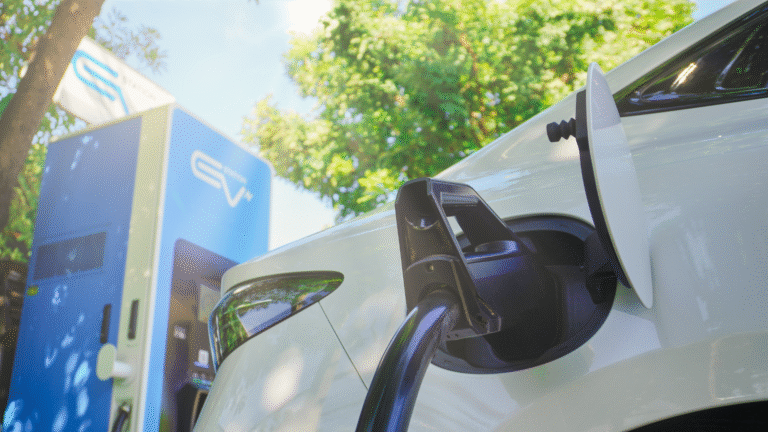Electric vehicles (EVs) are steadily gaining traction across Australia, but their adoption isn’t uniform. While urban centres like Sydney, Melbourne, and Brisbane are seeing rapid growth in EV ownership, rural and regional communities face unique opportunities and obstacles.
So what’s the EV experience like in the city compared to the country? Whether you’re navigating inner-city traffic or covering long distances between rural towns, understanding the pros and cons of EV ownership based on your location is key to making a smart purchase.
Let’s explore how EV life plays out across Australia’s diverse geography.
—
Table of Contents
- Charging Infrastructure: Urban Density vs. Rural Gaps
- Driving Patterns and Energy Efficiency
- Cost and Incentive Accessibility
- Vehicle Selection, Servicing, and Availability
- Real-Life Use Cases from Australian EV Drivers
- FAQs
- Conclusion
—
1. Charging Infrastructure: Urban Density vs. Rural Gaps
🏙️ Urban EV Charging
- Access to public chargers in cities is expanding rapidly.
- Apartments and townhouses may lack off-street parking, making home charging harder.
- Workplaces and shopping centres often provide free or subsidised charging.
🏞️ Rural EV Charging
- Fewer public charging options in regional and remote areas.
- Home charging is usually easier due to stand-alone houses with garages and space for solar panels.
- Trip planning is essential due to wider distances between chargers.
🔋 Charging Speed Considerations
| Location | Home Charging Access | Public Charging Availability | Solar Suitability |
|---|---|---|---|
| Urban | Medium to Low | High | Moderate |
| Rural | High | Low | High |
⚖️ Verdict: Urban areas benefit from better public networks; rural drivers benefit from more consistent home charging access—especially with solar.
—
2. Driving Patterns and Energy Efficiency
🛣️ Urban Driving:
- Frequent stop-start traffic makes regenerative braking highly effective.
- Shorter daily distances reduce charging frequency.
- Access to high-efficiency EVs and compact models for tight parking spaces.
🚗 Rural Driving:
- Longer trips between towns may lead to range anxiety.
- Open road driving is less efficient than city stop-start conditions.
- Need for vehicles with higher range or towing capacity (e.g. for trailers or caravans).
📊 Average Daily Travel:
| Location | Avg. Daily Distance | Regen Efficiency | Charging Frequency |
|---|---|---|---|
| Urban | 30–50 km | High | 1–2x/week |
| Rural | 80–150+ km | Low | 2–4x/week or more |
—
3. Cost and Incentive Accessibility
💰 Urban:
- Better awareness of state rebates and grants.
- Access to competitive electricity tariffs and EV-specific plans.
- Easier access to finance or EV leasing options.
💵 Rural:
- Upfront costs can still be a barrier despite savings over time.
- Less marketing and support from dealerships.
- Solar energy can significantly offset home charging costs.
🔖 Example Incentives (as of 2025):
- NSW: $3,000 rebate + stamp duty exemption
- VIC: $100 annual ZEV subsidy + free rego in some rural councils
- QLD: $6,000 rebate on eligible EVs
⚖️ Verdict: Urban residents have more incentive awareness and dealership support, while rural EV owners can gain long-term savings through home solar integration.
—
4. Vehicle Selection, Servicing, and Availability
🛠️ Urban EV Ownership:
- Wide choice of new and used EVs from major brands.
- Multiple servicing centres and EV-certified technicians.
- Availability of compact EVs suitable for tight city streets.
🔧 Rural EV Ownership:
- Limited stock availability at rural dealerships.
- Fewer EV-certified mechanics (though this is improving).
- Preference for EVs with higher ground clearance, larger range, or towing capacity (e.g. Tesla Model Y, Kia EV9, Ford F-150 Lightning when available).
🚚 Logistics Note:
- Vehicle delivery delays to regional areas still exist.
- Servicing may require travel to the nearest metro centre.
—
5. Real-Life Use Cases from Australian EV Drivers
🟢 Urban Case Study – Sydney Commuter:
“I drive a Polestar 2 and charge it overnight at home in my townhouse. Between office trips and shopping runs, I rarely drop below 50%. I only use public chargers when I’m in the city.”
🟢 Rural Case Study – Regional VIC Driver:
“Our family has a Tesla Model Y with a home solar setup. We drive 100 km a day to school and work. With the Powerwall, we’re almost self-sufficient. Public chargers are sparse, but planning makes it manageable.”
—
6. FAQs
🔌 Is rural EV ownership practical in Australia?
Yes, but you’ll need to plan routes more carefully and invest in home charging. Longer-range models are preferable.
⚡ Are there any EVs made for rural terrain?
Yes—models like the Kia EV9, Hyundai IONIQ 5 AWD, and upcoming electric utes (e.g. Ford F-150 Lightning) offer solid ground clearance and range.
🏘️ Can apartment dwellers in the city install chargers?
Yes, but it may require strata approval and additional cost. Shared chargers in buildings are becoming more common.
🛠️ What if there’s no EV mechanic nearby?
Most EVs require less maintenance than ICE vehicles. Mobile servicing and remote diagnostics are becoming more common for rural owners.
—
7. Conclusion
Urban and rural EV ownership each come with their own challenges and rewards. City drivers enjoy access to fast-charging networks and shorter trips, while rural drivers benefit from home solar integration and long-term savings—despite needing to plan more for distance and service access.
⚡ No matter where you live in Australia, EVs are a viable, sustainable choice—with the right strategy in place.
—
8. Meta Description
Explore the pros and cons of EV ownership in urban vs. rural Australia. Compare charging access, cost, and daily practicality across regions in 2025.
